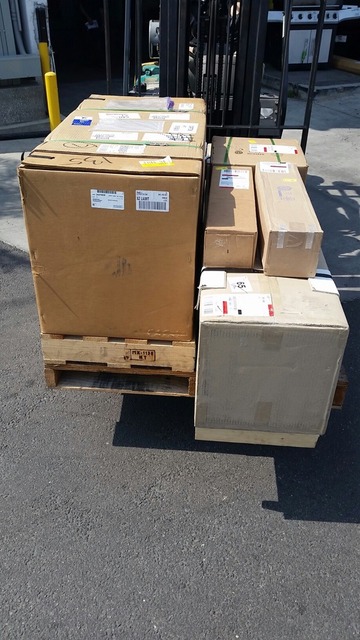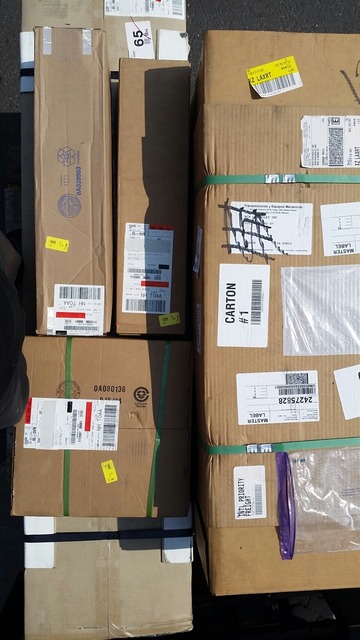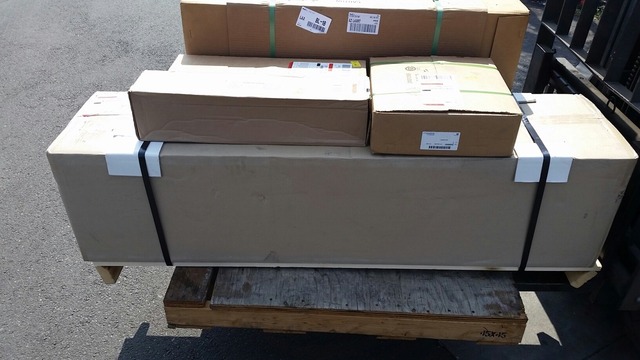Aftermarket Seven Speed Transmission Conversion (Corvette)
#31
Addict
Rennlist Member
Rennlist Member
Thread Starter
The following is my point of view!
We would put lower gear ratios/short ring and pinions in Turbo 911s, in the old days...at the customer's request.
The cars were always slower, since turbos like to build boost and keep that boost.
My naturally aspirated "hot rod" engines (which don't make anywhere near 750 horsepower) make so much torque that 7 speeds would be absurd. You'd be "skipping" so many gears, you'd do better with the 4 speed.
Perhaps, in order to make 750 horsepower, the ports get so huge that the velocity gets so low (in the port) that the torque suffers so badly that you will need a 7 speed. (Oval ports versus rectangular ports in a BBC come to mind.) The other obvious factor is that to make 750 horsepower, the camshaft is going to be so radical, that torque will suffer from that, also.
We would put lower gear ratios/short ring and pinions in Turbo 911s, in the old days...at the customer's request.
The cars were always slower, since turbos like to build boost and keep that boost.
My naturally aspirated "hot rod" engines (which don't make anywhere near 750 horsepower) make so much torque that 7 speeds would be absurd. You'd be "skipping" so many gears, you'd do better with the 4 speed.
Perhaps, in order to make 750 horsepower, the ports get so huge that the velocity gets so low (in the port) that the torque suffers so badly that you will need a 7 speed. (Oval ports versus rectangular ports in a BBC come to mind.) The other obvious factor is that to make 750 horsepower, the camshaft is going to be so radical, that torque will suffer from that, also.
Now this question is not directed only to you Greg but anybody with the knowledge of manual strokers, while I just suffered a setback with regards to sacking my machinist, I still need to progress these various aspects of the project. Getting to parts into my possession is the first step. The transmission project is an interesting one and one I would like to progress. There is a cost issue here and a strength issue potentially also.
There is three versions of the TR6070 seven speed, all with different strength/torque ratings. The 928 GT has a combined ratio of on the first two gears;
928
1st=10.27
2nd=6.85
Assuming a custom diff ratio of 3.67
TR6070 option A Wide ratio box = lowest torque input rating of 460lb
1st=10.89
2nd=7.59
TR6070 option B Medium ratio box = rating 545 lb, this box need oil pump added and 5,6 gears changed.
1st=9.75
2nd=6.53
TR6070 option C Close ratio box = rating 635 lb no changes needed.
1st=8.38
2nd=5.89
I have been told that, ignore the ratings, all boxes are well and truly strong enough. You will never break them.
If I went the wide ratio box, I would need to change 5th and 6th gears at a cost of around $750. This would give a usable six gears for performance, i.e top speed set in sixth gear and 7th gear for economy which is perfect for me.
The question is, is the close ratio Tremec box, this is the one used in the Z06, with the tallest first gear, is that gear too tall. Or will a stroker, in this case of 7.5 litres in capacity benefit from a slightly taller first gear as I find that you don't want to use first gear all the time and sometimes start in second gear.
The close ratio box effectively gives a first gear halfway between first and second gears of the 928 GT transmission. However you do need to factor doing hill starts on inclines of various degrees.
Opinions please.
#33
Addict
Rennlist Member
Rennlist Member
Thread Starter
Well the big news for today is the complete seven speed transmission and driveline from the 2015 Corvette Z06 is now on order (excluding differential). I also ordered the clutch. The clutch sounds interesting as it is a dual disc setup and can hold the torque of the Z06 engine which is 650 ft lbs, it is supposed to be 10.5" in diameter or 267 mm. The best part is it costs a whopping $339.57 with spigot bearing! So I am going to make a flywheel to suit and hopefully I can make the flywheel also accept my Tilton triple plate carbon clutch as seen here on a custom Corvette flywheel.
http://www.corvettemods.com/C6-ZR1-C...ch_p_8909.html
The great thing is that I may be able to swap the clutches depending on the required duty and save the carbon clutch for the high RPM racetrack use. The potential great thing for the 928 guys is that this clutch might be relatively easily adaptable to the more standard 928s.
http://www.corvettemods.com/C6-ZR1-C...ch_p_8909.html
The great thing is that I may be able to swap the clutches depending on the required duty and save the carbon clutch for the high RPM racetrack use. The potential great thing for the 928 guys is that this clutch might be relatively easily adaptable to the more standard 928s.
#34
Addict
Rennlist Member
Rennlist Member
Thread Starter
The gearing that has been chosen is as follows, I have compared the Tremec Z06 gear ratios using 3.67 diff gears to the ZF GT ratios using 2.72 rear ratios. For the speed in the gears I have factored a 295/30/18 tyre, ratios quoted are combined gear and diff ratios. My engine RPMs will be increased, I am not sure as to which stroke I will choose as such I will quote 7,500 and 8,000 for the speeds which are in kilometres.
Porsche 928GT.......7,500......8,000.....Corvette Z06.....7,500.....8,000...Factor
Ratio 1)10.27.........84 kph....90 kph....Ratio 1)8.38.....109 kph..115 kph..1.30
Ratio 2)6.85..........128 kph...137 kph..Ratio 2)5.89.....148 kph..159 kph..1.16
Ratio 3)4.88..........169 kph...180 kph..Ratio 3)4.43.....186 kph..199 kph..1.10
Ratio 4)3.69..........237 kph...253 kph..Ratio 4)3.67.....237 kph..250 kph..1.00
Ratio 5)2.72..........321 kph...342 kph..Ratio 5)3.01.....289 kph..308 kph..0.90
......................Top Speed speed set in Ratio 6)2.49.....349 kph..375 kph..0.00
........................Economy gear only in Ratio 7)1.65......................................
Cruising RPMs have been reduced because of the 7th gear and the estimate for 110 kph which is our highway speed is 1500. This is a reduction from my wife's auto car which is approx 2,500 rpms. Where I am we are at highway speeds a lot as such this should be of a worthwhile benefit. The version of the Tremec TR6070 I choose is rated at 635 ft input torque which is said to be very conservative. It comes with a temp sensor, internal oil pump, an output speed sensor and a gear selector sensor which predicts which gear you are selecting.
Porsche 928GT.......7,500......8,000.....Corvette Z06.....7,500.....8,000...Factor
Ratio 1)10.27.........84 kph....90 kph....Ratio 1)8.38.....109 kph..115 kph..1.30
Ratio 2)6.85..........128 kph...137 kph..Ratio 2)5.89.....148 kph..159 kph..1.16
Ratio 3)4.88..........169 kph...180 kph..Ratio 3)4.43.....186 kph..199 kph..1.10
Ratio 4)3.69..........237 kph...253 kph..Ratio 4)3.67.....237 kph..250 kph..1.00
Ratio 5)2.72..........321 kph...342 kph..Ratio 5)3.01.....289 kph..308 kph..0.90
......................Top Speed speed set in Ratio 6)2.49.....349 kph..375 kph..0.00
........................Economy gear only in Ratio 7)1.65......................................
Cruising RPMs have been reduced because of the 7th gear and the estimate for 110 kph which is our highway speed is 1500. This is a reduction from my wife's auto car which is approx 2,500 rpms. Where I am we are at highway speeds a lot as such this should be of a worthwhile benefit. The version of the Tremec TR6070 I choose is rated at 635 ft input torque which is said to be very conservative. It comes with a temp sensor, internal oil pump, an output speed sensor and a gear selector sensor which predicts which gear you are selecting.
#35
Rennlist Member
I would re-do that chart and put max RPM vehicle speed vs ratio on it. it makes no sense to go gear for gear ,, factoring in such things as tire size, unless both engines are redlining at the same RPM, which i dont believe you will be twisting up a 928 engine to 8000rpm, correct? 
go take my chart on the prior page, and mix in the new 7 speed ratios... do it for MPH or KPH, based on redline.

go take my chart on the prior page, and mix in the new 7 speed ratios... do it for MPH or KPH, based on redline.
#36
Addict
Rennlist Member
Rennlist Member
Thread Starter
Mark, the approximate redline for the 100 mm stroke engine is 7,500 and if I reduce the stroke to use the longer 6.2" rods the redline will be around 8,000. I haven't decided which way to go as yet.
The engine is not built from standard parts, in fact it is just about a bespoke build. It has very light parts much like Mike Simard's build.
The engine is not built from standard parts, in fact it is just about a bespoke build. It has very light parts much like Mike Simard's build.
#37
Rennlist Member
Mark, the approximate redline for the 100 mm stroke engine is 7,500 and if I reduce the stroke to use the longer 6.2" rods the redline will be around 8,000. I haven't decided which way to go as yet.
The engine is not built from standard parts, in fact it is just about a bespoke build. It has very light parts much like Mike Simard's build.
The engine is not built from standard parts, in fact it is just about a bespoke build. It has very light parts much like Mike Simard's build.
so, if 100mm stroke can facilitate 7500rpm, i think anderson was at 94mm and redlining at 7000rpm, right? so if you reduce the stroke to get there, that gives 8000rpm? I think the new mustangs are right around there today, like the ones that are running in T1 SCCA. i cant imagine the 928 engine being that peaky though.... in mostly stock form, they are putting out near 450+rwhp. only chip upgrade, headers and the 5 liter engine.

If it all works out to match the RPM redline of the corvette trannie, then you can just match the RPM to MPH and see what works best. however, you might find a broad HP curve that wont need a close ratio gear box.
based on Mikes dyno, i guess if you really need 600hp average... better get the 6 speed out! (and if you want it to last vs using a stock 928 trannie
 )
)
#38
Addict
Rennlist Member
Rennlist Member
Thread Starter
I guess thats an entirely different discussion.. but it begs the question, what is the HP curve going to look like? do we have a HP curve that resembles what it might look like. That needs to be determined first.
so, if 100mm stroke can facilitate 7500rpm, i think anderson was at 94mm and redlining at 7000rpm, right? so if you reduce the stroke to get there, that gives 8000rpm? I think the new mustangs are right around there today, like the ones that are running in T1 SCCA. i cant imagine the 928 engine being that peaky though.... in mostly stock form, they are putting out near 450+rwhp. only chip upgrade, headers and the 5 liter engine.
If it all works out to match the RPM redline of the corvette trannie, then you can just match the RPM to MPH and see what works best. however, you might find a broad HP curve that wont need a close ratio gear box.
based on Mikes dyno, i guess if you really need 600hp average... better get the 6 speed out! (and if you want it to last vs using a stock 928 trannie )
)
so, if 100mm stroke can facilitate 7500rpm, i think anderson was at 94mm and redlining at 7000rpm, right? so if you reduce the stroke to get there, that gives 8000rpm? I think the new mustangs are right around there today, like the ones that are running in T1 SCCA. i cant imagine the 928 engine being that peaky though.... in mostly stock form, they are putting out near 450+rwhp. only chip upgrade, headers and the 5 liter engine.

If it all works out to match the RPM redline of the corvette trannie, then you can just match the RPM to MPH and see what works best. however, you might find a broad HP curve that wont need a close ratio gear box.
based on Mikes dyno, i guess if you really need 600hp average... better get the 6 speed out! (and if you want it to last vs using a stock 928 trannie
 )
)The smaller engine will probably give slightly better milage and produce the same power with more flexibility to hold onto gears. Longer rod engines are generally better from a longevity perspective as they have less skirt loadings etc.
The engine will be what it will be, the cylinder head flow will be quite high as such the flow should support these higher rpms. The camshaft will also be quite big, I am hoping the ITBs will calm the engine to ensure good drivability. I don't have a lot of scope with the rear gearing, the box chosen has the internal oil pump and the highest torque capacity so single issues cannot be considered without looking across a broad range of issues.
#39
Rennlist Member
Join Date: Feb 2011
Location: Mostly in my workshop located in Sweden.
Posts: 2,235
Received 467 Likes
on
250 Posts
Looking at Mike Simard┤s power curve it probably would have risen slightly at 8000 rpm and probably fallen only slightly at 8500 rpm. Why did he stop at 7500 rpm?
7500 rpm and 100mm stroke is a mean piston velocity of 25 m/s rather high but should work if lightweight top quality engine parts are used.
A couple of years ago I did build a Moto Guzzi V-Twin race engine for a customer. This is a 2V (50/40mm) pushrod engine. Bore 95mm, stroke 78mm. Does that sound familiar? Almost identical to a 4,5 L 928 engine. Red line at 9250 rpm (24,05 m/s), peak power at 8200-8400 rpm, peak torque at 6500 rpm. When will we see a similar power curve from a small size 928 engine?
┼ke
7500 rpm and 100mm stroke is a mean piston velocity of 25 m/s rather high but should work if lightweight top quality engine parts are used.
A couple of years ago I did build a Moto Guzzi V-Twin race engine for a customer. This is a 2V (50/40mm) pushrod engine. Bore 95mm, stroke 78mm. Does that sound familiar? Almost identical to a 4,5 L 928 engine. Red line at 9250 rpm (24,05 m/s), peak power at 8200-8400 rpm, peak torque at 6500 rpm. When will we see a similar power curve from a small size 928 engine?
┼ke
Last edited by Strosek Ultra; 06-13-2015 at 02:15 AM.
#40
25m/s = 4921fpm. As Ake said, high but not too high for very well built race engine.
http://www.k20a.org/forum/archive/in...p/t-56002.html
Once saw Honda rod bearings, they were made by Clevite with coatings, no wonder why.
1. Honda S2000:
Engine Code: F20C1
Bore/Stroke: 3.43" X 3.31" (Edit: 87.122mm x 84.074mm)
Redline: 9000rpm
Piston Speed: 4965 Ft/min
2. Lamborghini Gallardo
Engine Code: N/A
Bore/Stroke: 3.25" X 3.65" (Edit: 82.55mm x 92.71mm)
Redline: 8000rpm
Piston Speed: 4866.67 Ft/min
3. Acura Integra Type R
Engine Code: B18C5
Bore/Stroke: 3.19" X 3.43" (Edit: 81.026mm x 87.122mm)
Redline: 8400rpm
Piston Speed: 4802 Ft/min
4. BMW M3 (Germany)
Engine Code: S54
Bore/Stroke: 3.43" X 3.58" (Edit: 87.122mm x 90.932mm)
Redline: 8000rpm
Piston Speed: 4773.33 Ft/min
5. Honda S2000 2004
Engine Code: F22C
Bore/Stroke: 3.43" X 3.57" (Edit: 87.122mm x 90.678mm)
Redline: 8000rpm
Piston Speed: 4760 Ft/min
6. Honda Integra Type R (JDM)
Engine Code: K20A
Bore/Stroke: 3.39" X 3.39" (Edit: 86.106mm x 86.106mm)
Redline: 8400rpm
Piston Speed: 4746 Ft/min
7. Acura Integra GSR 2001
Engine Code: B18C
Bore/Stroke: 3.19" X 3.43" (Edit: 81.026mm x 87.122mm)
Redline: 8200rpm
Piston Speed: 4687.67 Ft/min
8. Saleen S7
Engine Code: N/A
Bore/Stroke: 4.13" X 4.00"
Redline: 7000rpm
Piston Speed: 4666.67 Ft/min
9. Acura TSX
Engine Code: K24A2
Bore/Stroke: 3.43" X 3.90" (Edit: 87.122mm x 99.059mm)
Redline: 7100rpm
Piston Speed: 4615 Ft/min
10. Suzuki Hayabusa Sport Prototype
Engine Code: W701
Bore/Stroke: 3.19" X 2.48"
Redline: 11000rpm
Piston Speed: 4546.67 Ft/min
11. Honda Civic Type R
Engine Code: B16B
Bore/Stroke: 3.19" X 3.03" (Edit: 81.026mm x 76.961mm)
Redline: 9000rpm
Piston Speed: 4545 Ft/min
12. Toyota Celica GTS / Matrix XRS 2001
Engine Code: 2ZZ-GE
Bore/Stroke: 3.23" X 3.35"
Redline: 8100rpm
Piston Speed: 4522.5 Ft/min
13. Honda Prelude Type S (JDM)
Engine Code: H22A
Bore/Stroke: 3.43" X 3.57" (Edit: 87.122mm x 90.678mm)
Redline: 7500rpm
Piston Speed: 4462.5 Ft/min
14. Acura RSX Type S
Engine Code: K20A2
Bore/Stroke: 3.38" X 3.38" (Edit: 85.851mm x 85.851mm)
Redline: 7900rpm
Piston Speed: 4450.33 Ft/min
15. Ferrari 360 Modena (incl. Challenge, Stradale, etc)
Engine Code: N/A
Bore/Stroke: 3.35" X 3.11"
Redline: 8500rpm
Piston Speed: 4405.83 Ft/min
16. Lamborghini Murcielago
Engine Code: N/A
Bore/Stroke: 3.43" X 3.42"
Redline: 7600rpm
Piston Speed: 4332 Ft/min
17. McLaren F1
Engine Code: N/A (BMW V12)
Bore/Stroke: 3.39" X 3.43"
Redline: 7500rpm
Piston Speed: 4287.5 Ft/min
18. Renault Clio 2.0 RS 2003
Engine Code: F4R
Bore/Stroke: 3.26" X 3.66"
Redline: 7000rpm
Piston Speed: 4270 Ft/min
19. Porsche 911 GT3 RS 2004
Engine Code: N/A
Bore/Stroke: 3.94" X 3.01"
Redline: 8500rpm
Piston Speed: 4264.17 Ft/min
20. Pagani Zonda C12S
Engine Code: M120 7.3 AMG
Bore/Stroke: 3.6" X 3.64"
Redline: 7000rpm
Piston Speed: 4246.67 Ft/min
21. Peugeot 206RC 2004
Engine Code: EW10 J4 S
Bore/Stroke: 3.35" X 3.46"
Redline: 7300rpm
Piston Speed: 4209.67 Ft/min
22. Porsche Carrera GT
Engine Code: N/A
Bore/Stroke: 3.86" X 2.99"
Redline: 8400rpm
Piston Speed: 4186 Ft/min
23. Acura NSX-T
Engine Code: C32B
Bore/Stroke: 3.66" X 3.07" (Edit: 92.964mm x 77.978mm)
Redline: 8000rpm
Piston Speed: 4093.33 Ft/min
24. BMW M5 2002
Engine Code: S62
Bore/Stroke: 3.70" X 3.50"
Redline: 7000rpm
Piston Speed: 4083.33 Ft/min
25. BMW M5 E60
Engine Code: S65 (?)
Bore/Stroke: 3.62" X 2.96"
Redline: 8250rpm
Piston Speed: 4070 Ft/min
26. Nissan Primera W20V
Engine Code: N/A
Bore/Stroke: 3.39" X 3.39"
Redline: 7200rpm
Piston Speed: 4068 Ft/min
27. Ferrari Enzo
Engine Code: F140
Bore/Stroke: 3.62" X 2.96"
Redline: 8000rpm
Piston Speed: 3946.67 Ft/min
28. Ferrari 575 Maranello
Engine Code: 650 V21
Bore/Stroke: 3.50" X 3.03"
Redline: 7750rpm
Piston Speed: 3913.75 Ft/min"
http://www.k20a.org/forum/archive/in...p/t-56002.html
Once saw Honda rod bearings, they were made by Clevite with coatings, no wonder why.
1. Honda S2000:
Engine Code: F20C1
Bore/Stroke: 3.43" X 3.31" (Edit: 87.122mm x 84.074mm)
Redline: 9000rpm
Piston Speed: 4965 Ft/min
2. Lamborghini Gallardo
Engine Code: N/A
Bore/Stroke: 3.25" X 3.65" (Edit: 82.55mm x 92.71mm)
Redline: 8000rpm
Piston Speed: 4866.67 Ft/min
3. Acura Integra Type R
Engine Code: B18C5
Bore/Stroke: 3.19" X 3.43" (Edit: 81.026mm x 87.122mm)
Redline: 8400rpm
Piston Speed: 4802 Ft/min
4. BMW M3 (Germany)
Engine Code: S54
Bore/Stroke: 3.43" X 3.58" (Edit: 87.122mm x 90.932mm)
Redline: 8000rpm
Piston Speed: 4773.33 Ft/min
5. Honda S2000 2004
Engine Code: F22C
Bore/Stroke: 3.43" X 3.57" (Edit: 87.122mm x 90.678mm)
Redline: 8000rpm
Piston Speed: 4760 Ft/min
6. Honda Integra Type R (JDM)
Engine Code: K20A
Bore/Stroke: 3.39" X 3.39" (Edit: 86.106mm x 86.106mm)
Redline: 8400rpm
Piston Speed: 4746 Ft/min
7. Acura Integra GSR 2001
Engine Code: B18C
Bore/Stroke: 3.19" X 3.43" (Edit: 81.026mm x 87.122mm)
Redline: 8200rpm
Piston Speed: 4687.67 Ft/min
8. Saleen S7
Engine Code: N/A
Bore/Stroke: 4.13" X 4.00"
Redline: 7000rpm
Piston Speed: 4666.67 Ft/min
9. Acura TSX
Engine Code: K24A2
Bore/Stroke: 3.43" X 3.90" (Edit: 87.122mm x 99.059mm)
Redline: 7100rpm
Piston Speed: 4615 Ft/min
10. Suzuki Hayabusa Sport Prototype
Engine Code: W701
Bore/Stroke: 3.19" X 2.48"
Redline: 11000rpm
Piston Speed: 4546.67 Ft/min
11. Honda Civic Type R
Engine Code: B16B
Bore/Stroke: 3.19" X 3.03" (Edit: 81.026mm x 76.961mm)
Redline: 9000rpm
Piston Speed: 4545 Ft/min
12. Toyota Celica GTS / Matrix XRS 2001
Engine Code: 2ZZ-GE
Bore/Stroke: 3.23" X 3.35"
Redline: 8100rpm
Piston Speed: 4522.5 Ft/min
13. Honda Prelude Type S (JDM)
Engine Code: H22A
Bore/Stroke: 3.43" X 3.57" (Edit: 87.122mm x 90.678mm)
Redline: 7500rpm
Piston Speed: 4462.5 Ft/min
14. Acura RSX Type S
Engine Code: K20A2
Bore/Stroke: 3.38" X 3.38" (Edit: 85.851mm x 85.851mm)
Redline: 7900rpm
Piston Speed: 4450.33 Ft/min
15. Ferrari 360 Modena (incl. Challenge, Stradale, etc)
Engine Code: N/A
Bore/Stroke: 3.35" X 3.11"
Redline: 8500rpm
Piston Speed: 4405.83 Ft/min
16. Lamborghini Murcielago
Engine Code: N/A
Bore/Stroke: 3.43" X 3.42"
Redline: 7600rpm
Piston Speed: 4332 Ft/min
17. McLaren F1
Engine Code: N/A (BMW V12)
Bore/Stroke: 3.39" X 3.43"
Redline: 7500rpm
Piston Speed: 4287.5 Ft/min
18. Renault Clio 2.0 RS 2003
Engine Code: F4R
Bore/Stroke: 3.26" X 3.66"
Redline: 7000rpm
Piston Speed: 4270 Ft/min
19. Porsche 911 GT3 RS 2004
Engine Code: N/A
Bore/Stroke: 3.94" X 3.01"
Redline: 8500rpm
Piston Speed: 4264.17 Ft/min
20. Pagani Zonda C12S
Engine Code: M120 7.3 AMG
Bore/Stroke: 3.6" X 3.64"
Redline: 7000rpm
Piston Speed: 4246.67 Ft/min
21. Peugeot 206RC 2004
Engine Code: EW10 J4 S
Bore/Stroke: 3.35" X 3.46"
Redline: 7300rpm
Piston Speed: 4209.67 Ft/min
22. Porsche Carrera GT
Engine Code: N/A
Bore/Stroke: 3.86" X 2.99"
Redline: 8400rpm
Piston Speed: 4186 Ft/min
23. Acura NSX-T
Engine Code: C32B
Bore/Stroke: 3.66" X 3.07" (Edit: 92.964mm x 77.978mm)
Redline: 8000rpm
Piston Speed: 4093.33 Ft/min
24. BMW M5 2002
Engine Code: S62
Bore/Stroke: 3.70" X 3.50"
Redline: 7000rpm
Piston Speed: 4083.33 Ft/min
25. BMW M5 E60
Engine Code: S65 (?)
Bore/Stroke: 3.62" X 2.96"
Redline: 8250rpm
Piston Speed: 4070 Ft/min
26. Nissan Primera W20V
Engine Code: N/A
Bore/Stroke: 3.39" X 3.39"
Redline: 7200rpm
Piston Speed: 4068 Ft/min
27. Ferrari Enzo
Engine Code: F140
Bore/Stroke: 3.62" X 2.96"
Redline: 8000rpm
Piston Speed: 3946.67 Ft/min
28. Ferrari 575 Maranello
Engine Code: 650 V21
Bore/Stroke: 3.50" X 3.03"
Redline: 7750rpm
Piston Speed: 3913.75 Ft/min"
#42
Rennlist Member
There is a few different issues you raise, firstly with the engine, Mike Simard's engine had lighter internals than that of Mark Anderson's, Mike's engine revs to around 7,700 to 7,800 rpms and also had a stroke of 94 mm. So what I am saying is that 100 mm will operate at 7,500 rpm and you have to remember that this engine has reduced crankshaft journals for reduced friction and loadings. The parts are of exceptional quality, the rods made by Pankl and the bolts have enormous strength. If the rpms go to 8,000 the stroke goes down to 96 mm.
The smaller engine will probably give slightly better milage and produce the same power with more flexibility to hold onto gears. Longer rod engines are generally better from a longevity perspective as they have less skirt loadings etc.
The engine will be what it will be, the cylinder head flow will be quite high as such the flow should support these higher rpms. The camshaft will also be quite big, I am hoping the ITBs will calm the engine to ensure good drivability. I don't have a lot of scope with the rear gearing, the box chosen has the internal oil pump and the highest torque capacity so single issues cannot be considered without looking across a broad range of issues.
I would think with that much power, the main purpose of the gear box is to not break.

#43
Addict
Rennlist Member
Rennlist Member
Thread Starter
#44
Addict
Rennlist Member
Rennlist Member
Thread Starter
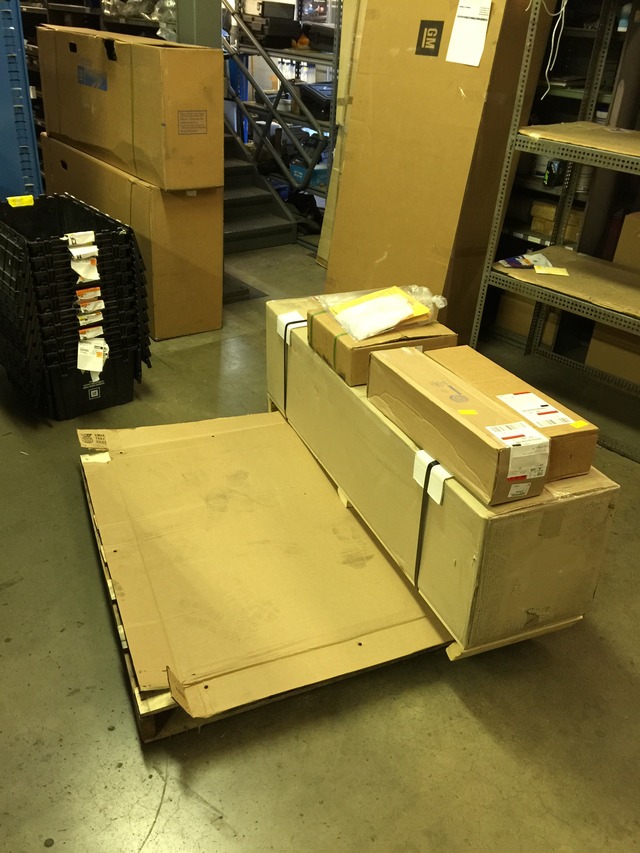
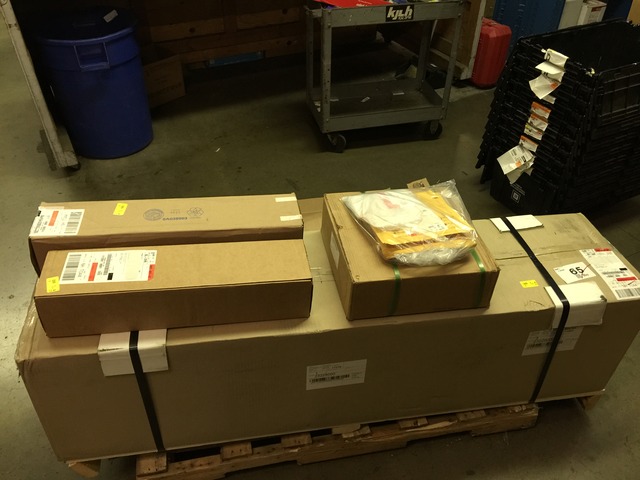
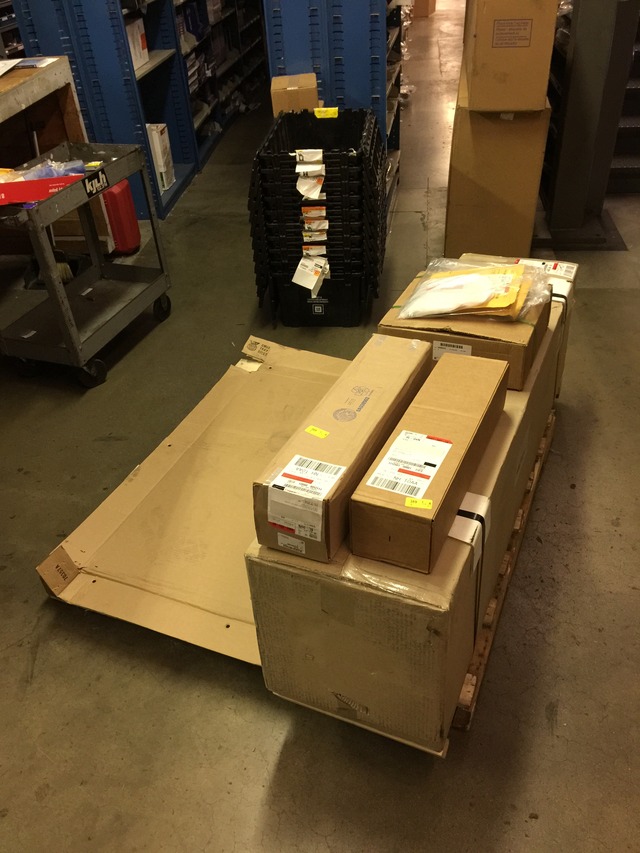
The transmission is on back order with GM, hopefully not too much longer, The parts on the pallet are the clutch, torque tube, shift rods and hydraulic throwout bearing.
#45
Addict
Rennlist Member
Rennlist Member
Thread Starter
Well after a long wait the parts are now at the dock awaiting allocation to a vessel. Should be about two months before I get them. So it is finally happening!
